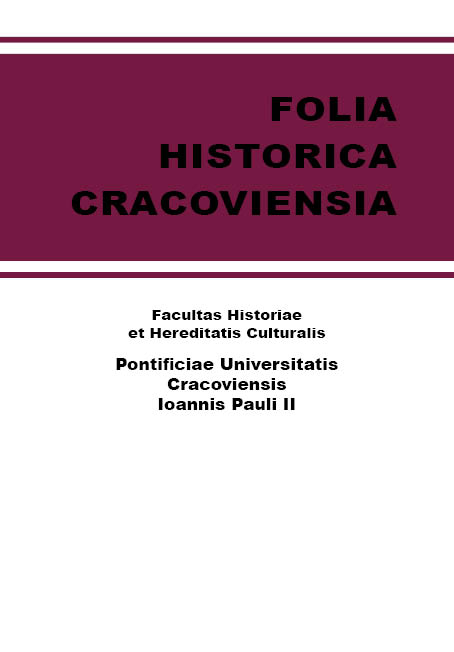Wiekopomna zasługa i zakonna pokora – dzieje serca Stanisława Konarskiego
The memorable service and monastic humility – the history of Stanisław Konarski’s heart
Author(s): Ryszard MączyńskiSubject(s): Christian Theology and Religion, Ethnohistory, 17th Century, 18th Century, Sociology of Religion
Published by: Wydawnictwo Naukowe Uniwersytetu Papieskiego Jana Pawła II w Krakowie
Keywords: Stanisław Konarski; heart; burial; epitaph; commemoration; Piarists; Krakow;
Summary/Abstract: The article concentrates on an interesting 130-year-old artefact located in the Krakow church of Piarists – the decoration of the place where Stanisław Konarski’s (1700–1773) heart was buried. Konarski was a monk of the Pious Schools in the 18th century, as well as publisher of a collection of national laws Volumina legum, a bold commentator calling for strengthening royal power and abolishing liberum veto, reformer of the educational system and founder of the renowned, modern Collegium Nobilium. The circumstances of the discovery and relocation of the relic in 1882 from Warsaw to Krakow and the ceremony of its introduction to the monastic Church of the Transfiguration of Jesus on February 13 are also outlined. Three significant research issues are also discussed. The first one is the problem of the authenticity of the artefact, which was discovered more than a hundred years after Konarski’s death in the possession of a Warsaw optician Jakub Pik. It was then that the question started occupying the minds of researchers, including the rector of the Krakow college Adam Słotwiński. The question is made more relevant by the lack of any direct evidence from 1773 about the removal of Stanisław Konarski’s heart from his body after his death. The information gathered so far allow us to assume, with probability bordering on certainty, that it is authentic and the only surviving part of this famous monk’s body. Another question, totally absent from past reflections on the subject, is the reason why the heart was removed. This particular aspect turns our attention at a strikingly popular early-modern Polish tradition – first in royal families, later also among magnates and nobility – of burying hearts separately, usually by entombing them in a church founded by the deceased. It was found that a considerable number of hearts removed from bodies had been inhumed in Piarist churches (Rzeszów, Warsaw or Łowicz). This tradition, however, did not normally apply to monks. The case of Stanisław Konarski’s heart proves that in the juxtaposition of great merit and monastic vows of humility the merit prevailed. A third question, which contemporaneous researchers could not answer, is the original destination of the box with Konarski’s heart. A confrontation of scant mentions with the situation of Warsaw Piarists in the first half of the 19th century allows us to retrace its route. In 1773 it was placed in the monastic school chapel at Collegium Nobilium, then in 1811 it was relocated to the Piarist church in Długa street; in 1834 the order was deprived of the church, so Konarski’s heart was brought to their college in Jezuicka street. It was held there until 1866, and after the dissolution of the order it was in the possession of Jakub Pik. Pik carefully stored the relic and donated it to the Piarist church in Krakow, where in 1882 it was placed in an alcove in the presbytery. The decoration of the place was designed by Tadeusz Łepkowski, the then restorer. Stanisław Konarski’s bust was sculpted by Tadeusz Błotnicki from Krakow. Facial features were reproduced on the basis of an image from the times of Stanisław August – a sculpture by André Le Brun, displayed in a gallery of people of particular merit to the Republic of Poland opened in the Knights’ Hall at the Royal Castle in Warsaw in 1786.
Journal: Folia Historica Cracoviensia
- Issue Year: 22/2016
- Issue No: 1
- Page Range: 265-302
- Page Count: 38
- Language: Polish

